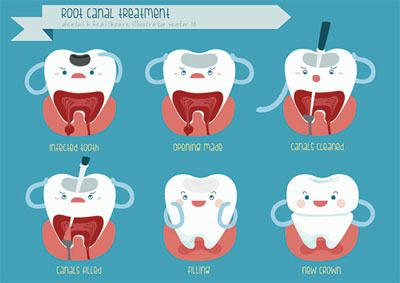
If you’ve ever experienced the excruciating pain of a dental emergency, you know just how important it is to get immediate care. If you’ve ever been through the agony of a dental emergency, you understand the urgency of seeking immediate treatment. And when it comes to emergency dental procedures, the dreaded root canal often comes to mind. But fear not! In this article, we’ll guide you through what to expect during an emergency root canal, ensuring you’re prepared and informed.
Despite the intimidating term, a root canal is a pain-relieving procedure aimed at saving your tooth from extraction. With local anesthesia, the process is virtually painless. Join us as we demystify the world of emergency root canals, exploring the steps, recovery, and helpful tips for a smoother experience.

What to Expect During an Emergency Root Canal
A root canal is a dental procedure that is performed to treat an infected tooth root. While root canals are typically scheduled in advance, there are situations where an emergency root canal may be necessary. In this article, we will explore what to expect during an emergency root canal and provide you with the information you need to be prepared.
The Need for an Emergency Root Canal
When a tooth becomes infected, it can lead to severe pain and discomfort. In some cases, the infection may progress rapidly, requiring immediate treatment.
This is where an emergency root canal comes into play.
An emergency root canal is performed to alleviate pain, remove the infection, and save the tooth from further damage or extraction.
During an emergency root canal, the dentist will first evaluate the tooth and surrounding area to determine the extent of the infection. They will then administer a local anesthetic to numb the area and ensure you are comfortable throughout the procedure. Once the anesthesia has taken effect, the dentist will proceed with the root canal.
In conclusion, an emergency root canal is a dental procedure performed to treat an infected tooth root. During the procedure, the dentist will remove the infected pulp, clean the root canals, and seal them with a biocompatible material. Following the root canal, it is important to follow the dentist’s instructions for post-procedure care. By undergoing an emergency root canal, you can alleviate pain, save the natural tooth, and prevent further damage to your oral health.
Key Takeaways: What to Expect During an Emergency Root Canal
- An emergency root canal is a dental procedure done to save a severely damaged or infected tooth.
- During the procedure, the dentist will numb the area with local anesthesia to minimize discomfort.
- The dentist will create a small hole in the tooth to access the infected pulp and remove it.
- After removing the pulp, the dentist will clean and disinfect the tooth’s canals before filling them with a special material.
- Finally, a temporary filling or crown will be placed on the tooth, and a follow-up appointment will be scheduled.
Frequently Asked Questions
Why might I need an emergency root canal?
An emergency root canal may be necessary if you are experiencing severe tooth pain, swelling, or an abscess. These symptoms could indicate that the pulp (the innermost part of the tooth) has become infected or damaged. In some cases, a cracked or broken tooth may also require immediate root canal treatment to alleviate pain and prevent further complications.
During an emergency root canal, the dentist will remove the infected or damaged pulp, clean the root canal, and seal it to prevent reinfection. This procedure can help save your tooth and relieve your symptoms.
What can I expect during an emergency root canal?
During an emergency root canal, your dentist will first numb the area around the affected tooth using a local anesthetic. This ensures that you will not feel any pain during the procedure. Once you are numb, the dentist will create a small access hole in the tooth to reach the pulp chamber.
Next, the infected or damaged pulp will be carefully removed using specialized tools. The root canal will then be cleaned and disinfected to remove any remaining bacteria. Finally, the dentist will fill and seal the root canal to prevent reinfection. In some cases, a temporary filling may be placed until a permanent restoration, such as a crown, can be placed on the tooth.
Is an emergency root canal painful?
An emergency root canal should not be painful during the procedure. Your dentist will administer a local anesthetic to numb the area around the affected tooth, ensuring that you do not feel any pain. However, it is normal to experience some discomfort or sensitivity in the days following the procedure. This can usually be managed with over-the-counter pain medication and should subside within a few days.
If you are concerned about pain during the procedure, you can discuss options for sedation or anesthesia with your dentist. They will work with you to ensure your comfort throughout the root canal treatment.
How long does an emergency root canal take?
The duration of an emergency root canal can vary depending on the complexity of the case. On average, the procedure can take between 1 to 2 hours to complete. Factors such as the number of canals in the affected tooth, the condition of the pulp, and the extent of the infection can influence the length of the procedure.
It is important to allow enough time for the dentist to properly clean and disinfect the root canal to ensure the success of the treatment. Your dentist will provide you with a more accurate estimate of the duration based on your specific case.
What is the recovery process like after an emergency root canal?
After an emergency root canal, you may experience some sensitivity or discomfort in the treated tooth for a few days. This is normal and can usually be managed with over-the-counter pain medication. It is important to follow any post-operative instructions provided by your dentist, such as avoiding hard foods and maintaining good oral hygiene.
In some cases, a temporary filling may be placed until a permanent restoration, such as a crown, can be placed on the tooth. You may need to schedule a follow-up appointment with your dentist to complete the restoration process. It is important to attend all recommended follow-up appointments to ensure the long-term success of the root canal treatment.
What to Expect During a Root Canal Procedure
Final Thoughts
During an emergency root canal, you can expect the dentist to carefully numb the area around the affected tooth, ensuring you won’t feel any pain during the procedure. They will then create a small access hole to reach the infected pulp and carefully remove it. Once the infected pulp is removed, the canals are cleaned and disinfected before being filled and sealed with a dental material. Finally, a temporary or permanent crown may be placed to protect the tooth and restore its functionality.
It’s important to remember that every case is unique, so your individual experience may vary.
However, by being proactive and seeking treatment as soon as possible, you’re taking an important step towards preserving your oral health. Remember to follow your dentist’s post-treatment instructions and maintain good oral hygiene to ensure the success of your emergency root canal. With the right care and attention, you’ll be back to smiling and enjoying your favorite foods in no time.
Call or Book appointment online
:Ace Dental Care Alpharetta office: 678-562-1555 - Book Now
Ace Dental Care Norcross office: 770-806-1255 - Book Now
Disclaimer
This blog post was generated by artificial intelligence. The content of this post may not be accurate or complete, and should not be relied upon as a substitute for professional advice. If you have any questions about the content of this post, please contact us.
We are constantly working to improve the accuracy and quality of our AI-generated content. However, there may still be errors or inaccuracies. We apologize for any inconvenience this may cause.





